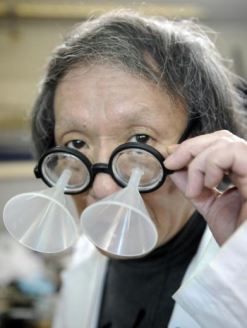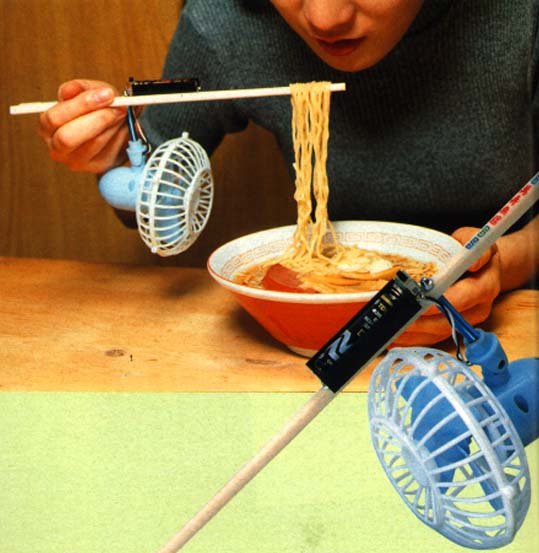Chindogu, the noble Japanese art of inventing useless inventions
Some gadgets seem very useful at first glance, but if you think about them a little more deeply, they are extremely impractical. Of course every inventor makes a blunder now and then, but elevating these blunders to an art form is of course only possible in Japan. Meet chindogu, typical Japanese useless, but very funny gadgets.
Examples of chindogu

The movement started with Japan’s Kenji Kawakami. You can somewhat compare the chindogu with the Rube Goldberg machines, enormously complicated, but useless machines. Albeit that this one can also be simple in nature, and usually is.
Since the first chindogu saw the light of day, hundreds have been created. For example, you can think of three pens tied together, so that you can write the same word three times at the same time.
Or a baby suit with brushes attached, so that when the little one crawls across the floor, the floor is also swept immediately.
The fan chopsticks you see above solve the dire problem of too-hot noodle strings.
Are chindogu really useless then? Not exactly, they have two clear advantages. In addition to the humor element, inventors also learn how not to do things in this way, and thus learn to think about the practical applicability of their invention. If an invention has a high chindogu content, such as the illustrious Juicero, as an inventor or product designer it is better to think of something else. More examples in the video below.
The 10 rules that a real chindogu must meet
1. The chindogu will not be of any practical use. Do you accidentally come up with something that turns out to be very useful? Then you have failed. But you can apply for a patent. A good example of this is the selfie stick, which started its existence that way, but is now very popular because it turned out to be quite handy in retrospect.
2.The chindogu must exist. It is not enough to just think of it, you have to actually put it together.
3. The chindogu must have something anarchic about it. Although this requirement is, of course, self-contradictory.
4. The chindogu must be applied in daily life.
5. The chindogu is not for sale. See one for sale? Then you know that once you buy it, it ceases to be one.
6. Sense of humor should be the only reason to make a chindogu.
7. The chindogu is innocent and not propaganda. So a GroenLinks cup with holes in it doesn’t count.
8. Chindogus do not violate social taboos.
9. Chindogus cannot be patented. That wouldn’t make much sense either, because they aren’t for sale, after all.
10. Chindogus have no prejudices. For example, they may not be sexist, nationalist or racist.
More information

Kenji Kawakami co-wrote the book with another enthusiast, Papia 101 Unuseless Japanese Inventions: The Art of Chindōgu. And a sequel to this book, with more examples.
The Chindogu Society also emerged. The most important sources of information, along with some useful links, can be found on Wikipedia, among others.



